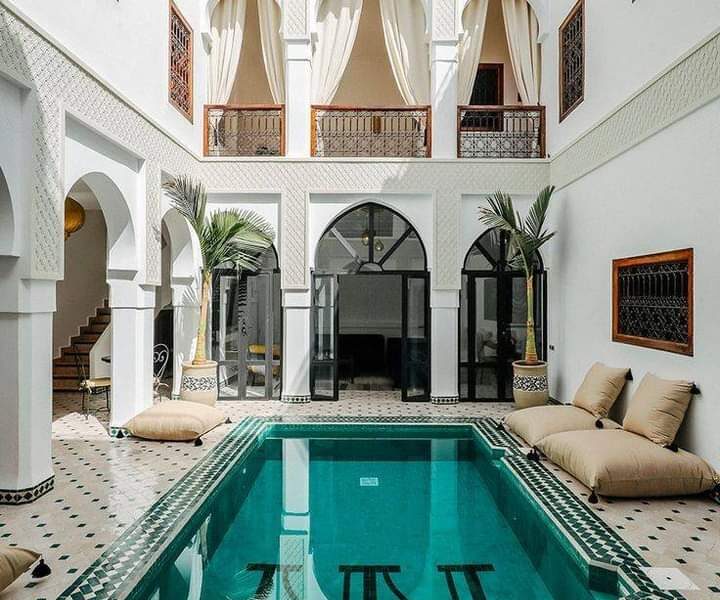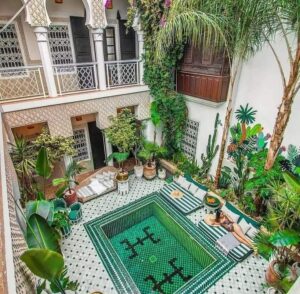

Moroccan riads are exquisite architectural gems that embody the rich cultural heritage and intricate craftsmanship of Morocco. Typically found in the heart of historic medinas (old cities), riads are traditional Moroccan homes centered around a central courtyard or garden, offering an oasis of tranquility amidst the bustling streets.
The architecture of riads is characterized by several distinct features:
- Courtyard or Garden: At the heart of every riad lies a serene courtyard adorned with lush greenery, trickling fountains, and often a citrus tree. This open-air space serves as the focal point of the home, providing natural light, ventilation, and a peaceful retreat from the outside world.
- Architectural Details: Riads are renowned for their intricate architectural details, which reflect a blend of Moroccan, Andalusian, and Moorish influences. These details often include ornate tilework (zellij), intricately carved wooden screens (mashrabiya), and decorative plasterwork (gypsum carving).
- Rooftop Terrace: Many riads feature a rooftop terrace offering panoramic views of the surrounding medina and skyline. These terraces are ideal for relaxing, dining, or enjoying the mesmerizing sunset over the city.
- Riad Layout: The layout of a riad typically revolves around the central courtyard, with rooms arranged around it on one or more levels. Common spaces such as living rooms, dining areas, and guest rooms are seamlessly integrated into the design, fostering a sense of interconnectedness and communal living.
- Traditional Materials: Traditional materials such as tadelakt (polished plaster), terracotta tiles, and cedar wood are prominently featured throughout riads, adding warmth, texture, and authenticity to the architecture.
- Islamic Architecture: Riads often incorporate elements of Islamic architecture, such as horseshoe arches, geometric patterns, and calligraphic motifs, which are symbolic of spiritual and cultural significance.
- Overall, Moroccan riads embody a harmonious fusion of architecture, artistry, and cultural heritage, inviting visitors to experience the timeless beauty and enchanting ambiance of Morocco’s architectural wonders.



